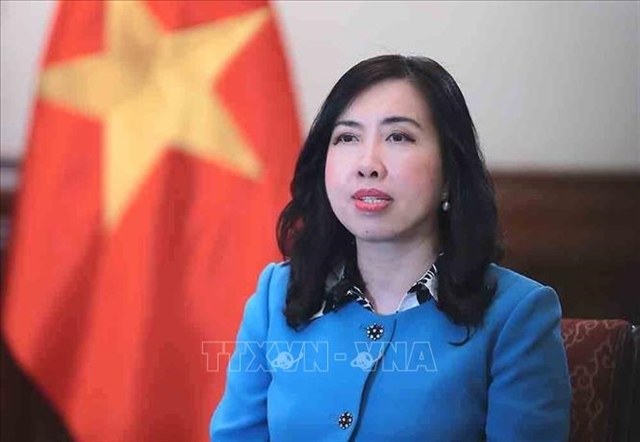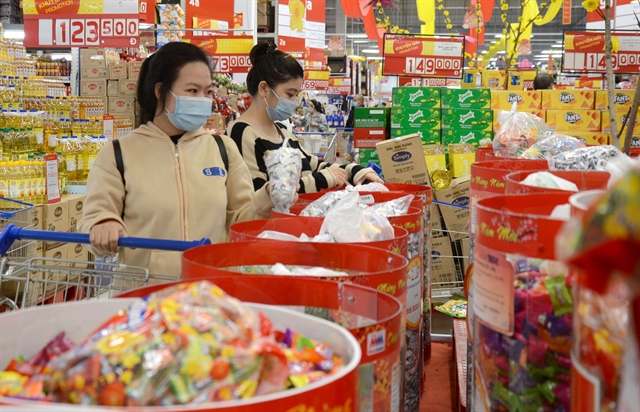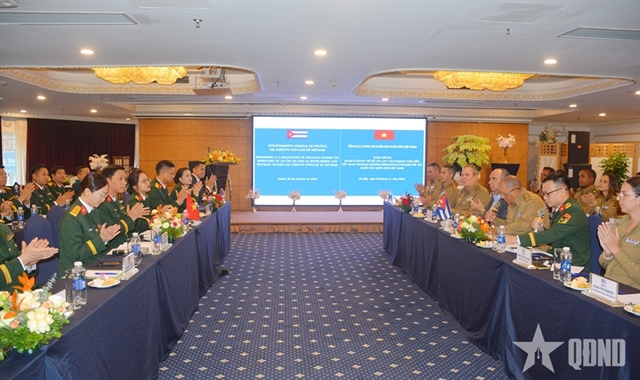 Economy
Economy


|
| Consumers in a supermarket in Đà Nẵng City. Eleven-month total retail sales of goods and services were 17.5 per cent higher than those in 2021. VNA/VNS Photo Quốc Dũng |
HÀ NỘI — Việt Nam's economy is recovering strongly from the devasting COVID-19 pandemic and is expected to reach a growth rate of over 8.0 per cent for the whole of 2022, according to Trần Tuấn Anh, head of the Central Economic Commission.
Anh was speaking at the Fifth Vietnam Economic Forum chaired by the Prime Minister Phạm Minh Chính on December 17.
The head said in the first 11 months of 2022 exports grew by 13.4 per cent year-on-year, leading to a trade surplus of US$10.6 billion.
Additionally, the delivery of foreign direct investment grew by 15.1 per cent, industrial production by 8.6 per cent, and total retail sales of goods and services by 17.5 per cent during the period.
It is worth noting that eleventh-month fiscal revenues overshot targets by 16.1 per cent despite tax cuts to boost firms' recovery.
"These indicators suggest that domestic consumption is rebounding and firms are reacting quickly to the opportunities emerging after the pandemic," said Anh.
However, the head was also concerned that dark clouds are gathering on the horizon and their impact has begun to manifest itself in some poor indicators.
For example, employment indices in November dropped by 10 per cent year-by-year among mining firms and 6.2 per cent among furniture manufacturers, a downturn caused by the weakening global demand.
Additionally, interest rates and exchange rates were soaring in the past few months to reflect the tight liquidity in the finance and banking market.
The delivery of public investment in the first 11 months of the year fell short of the target by 41.67 per cent, leading to a situation that a huge part of governmental resources could not be tapped despite the economy being in need of capital.
The head said there would be a great deal of uncertainties about the global economy in 2023. He forecast that inflation in the world would remain high next year, leading to a trend of rising interest rates. Meanwhile, global monetary policy and fiscal policy would continue to be contractionary amid volatile fuel prices.
Nguyễn Chí Dũng, Minister of Planning and Investment, underlined the private sector as a driving force behind economic growth. Unfortunately, firms had to slow down in the first half of Q4 on account of mounting costs.
In the face of the challenges ahead, the minister called for the implementation of eight measures to keep the economy on track.
The first measure involves keeping macroeconomic stability, curbing inflation, stimulating economic growth, and maintaining economic balance. This measure requires a flexible combination of monetary policy, fiscal policy, and other policies.
The second measure centres around institutional reforms in the socialist-oriented market economy, which are believed to be a catalyst for economic progress.
The third measure is based on infrastructure upgrades, especially the acceleration of key traffic projects in big cities, including the North-South Expressway and Belt Road Number 3 in HCM City.
The fourth measure focus on the development of high-quality human resources, with priority being given to innovative research, technology edges, and start-ups.
The fifth measure is to embrace sustainable development and digital transformation, which are the key to a higher level of competitiveness and productivity in the economy.
The sixth involves the implementation of Resolution 6 on regional development, which is aimed to improve the economic ties among regions and lay the groundwork for the emergence of economic hubs.
The seventh centres around the implementation of the Socioeconomic Recovery Programme in 2023, which is expected to drive down production costs and improve cash flows among firms.
The last measure is to integrate social, cultural, and economic development into national defence, political stability, and environmental protection.
In addition to the eight measures, the minister also urged the country to push ahead with green growth and circular economy to transform into an economy with low carbon footprint and green production.
He forecast that the global situation would be tougher in 2023 against a backdrop of higher inflation, tightened monetary policy, rising interest rates, and the weakening of currencies in many countries. — VNS




